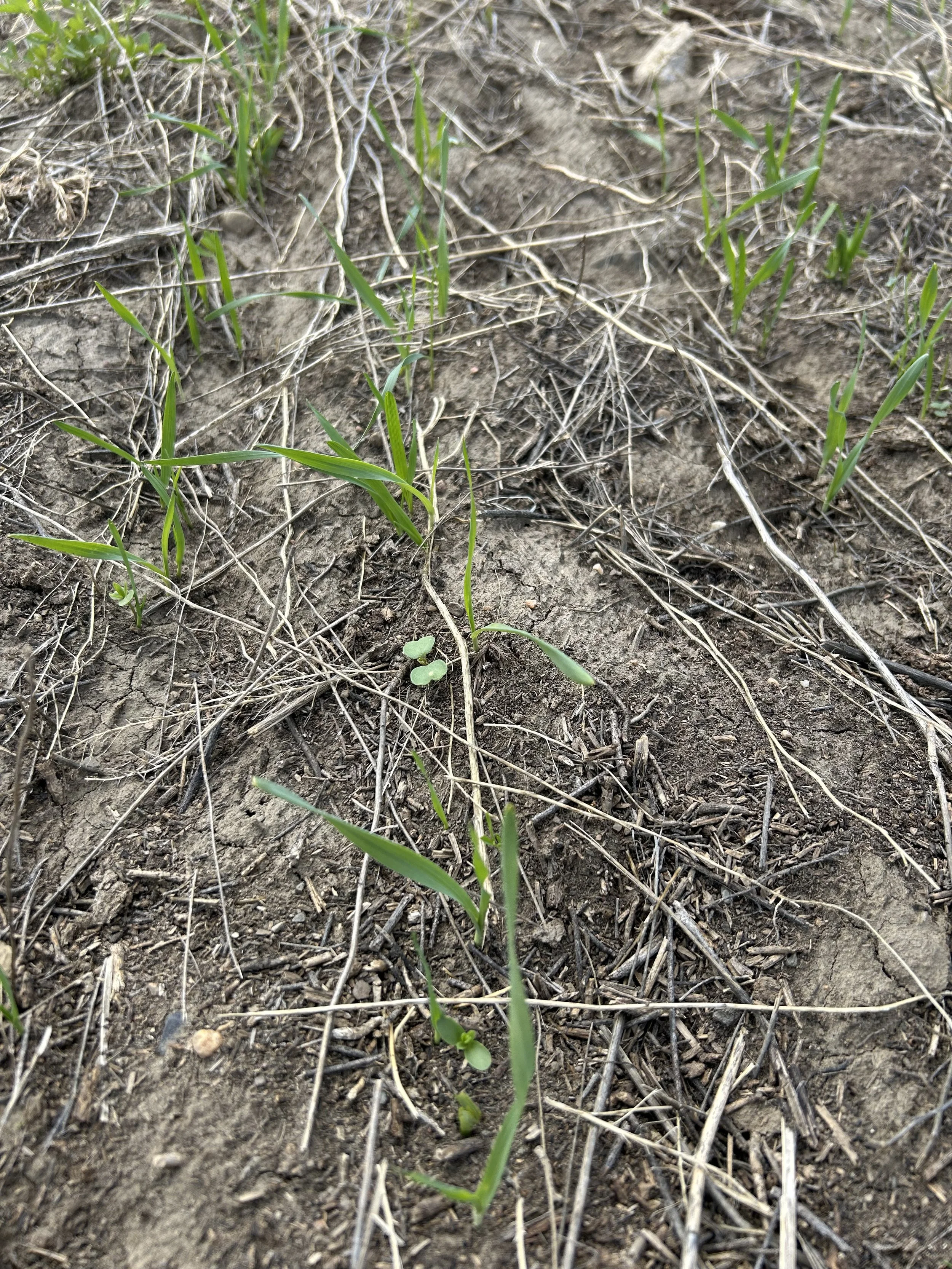Crop-Life Balance
A colleague complained that he was forced to reschedule his golf game.
The light, soaking rain mucked up his shoes.
This friend works hard – he never quits at 5 and he uses his weekends to catch up on professional commitments.
Golfing provides a bit of work-life balance.
I admire him for making time to get some exercise, breathe outdoor air and think about something besides his demanding job.
The stress relief will probably extend his life, and it is always a good thing to have a little fun.
But I told him to never complain about rain ever again.
While other parts of Montana have enjoyed great moisture lately, my ranch has been dusty.
Again.
For years, I’ve been working to buffer the impacts of increasingly frequent drought.
One new buffer is a cover crop in my alfalfa field.
With 12 varieties of annual plants, I hope to jumpstart microbes in the soil while I grow forage for my sheep and cattle.
We all know that legumes such as alfalfa, peas and others add nitrogen to the soil.
Research shows that plant diversity –annuals, perennials or both -- creates a synergy that increases availability of many nutrients in the soil.
I’m not a farmer and I’ve been slow to join the cover crop bandwagon so I decided to plant less expensive annuals instead of perennials.
After all, this experiment might not work.
Especially if it didn’t rain.
I planned to inter-seed this cover crop in an old patch of alfalfa.
That meant I would graze my alfalfa instead of cut it for winter hay. I would replace that winter hay with purchased hay.
If it didn’t rain, my cover crop wouldn’t grow so I wouldn’t have fall pasture, plus hay prices would increase.
Expenses could double.
Last spring, I asked a plant specialist to develop a cool-season cover crop mix. She encouraged me to plant a warm-season mix because it would grow more forage.
Cool-season annuals germinate in May and June while warm-season annuals need the warmer soil of July.
Around here, the rain faucet usually turns off by mid-June, with erratic thunderstorms providing the only warm-season moisture.
Usually.
Last spring, we didn’t get enough moisture to settle the dust.
I asked my friend with the seed drill, Paul, to wait a year to plant my cover crop.
I would store my seeds in my shop, hoping for more moisture this spring.
Meanwhile, he planted his own warm-season cover crop, betting on late summer rain.
Last August, it rained every other day.
Farmers had a hard time harvesting their grain crops.
Paul’s warm-season cover crop grew higher than his shoulders while my cool-season crop sat in my shop.
Oops.
I faced the same circumstances this spring: No rain.
Paul and I stood in my dusty field discussing the options.
I asked him to plant my field despite the bright blue, cloudless sky.
After all, the forecast predicted a half inch of rain the next day -- perfect timing for good germination.
That storm brought four drops per acre and huge dust clouds.
If I owned stock in my seeding investment, the market would be plummeting.
If I were playing roulette, the house would be winning.
Two weeks later, the forecast predicted showers, maybe enough to settle the dust.
An inch of rain fell.
Seedlings began to sprout in rows.
A rancher friend reset our expectations -- we probably won’t get enough rain to grow good grass, hay and cover crops, but maybe we will get timely showers that feed them just when they need it most.
I’ll take that bet.
Hopefully, my golfer colleague can reschedule his work-life balance once in a while.
